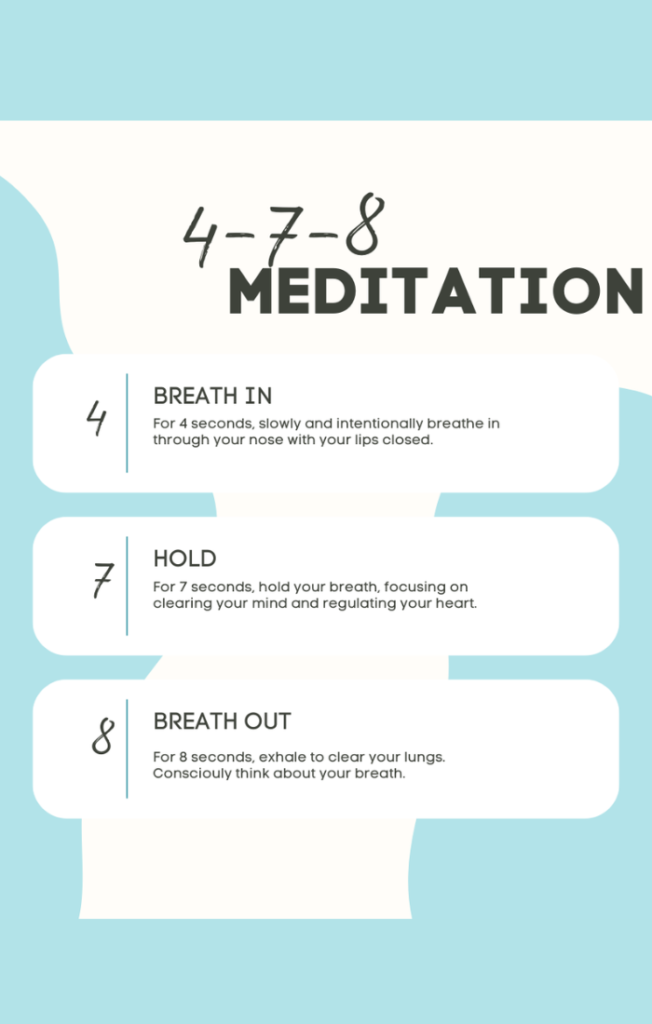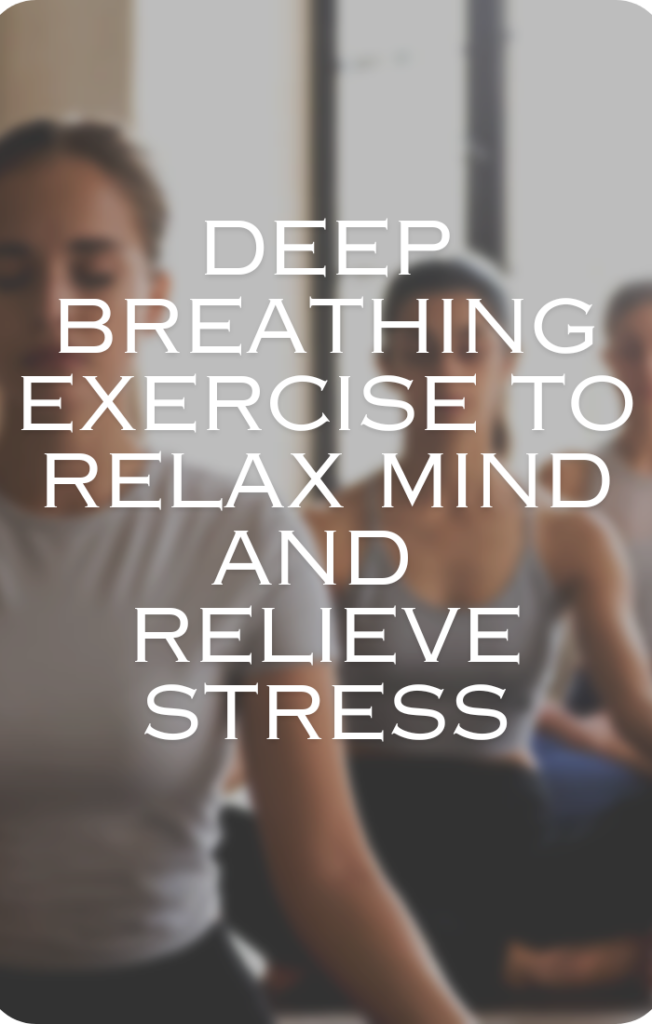Embark on a transformative journey toward stress management through deep breathing techniques. In this article, we delve into the profound impact of intentional breathing on our physical and mental well-being. Discover the art of deep breathing, explore various techniques, and learn how incorporating mindful breathwork into your routine can be a powerful tool for cultivating calmness and resilience in the face of life’s challenges. Join us on this exploration of breath as a pathway to mastering stress and enhancing your overall sense of balance and tranquility.
Table of Contents
Understanding Stress and Its Impact
Stress is an intricate facet of modern life, affecting individuals physically, emotionally, and mentally. It’s essential to define stress and recognize its profound impact on health. Stress isn’t just a fleeting discomfort; it can become a chronic issue if left unmanaged. This section delves into the nuanced definition of stress and explores how it can influence various aspects of well-being. By comprehending stress at its core, individuals can take the first step toward effective stress management.
Stress can affect the human body in the following manners:
- Weakened immune system
- Increased risk of cardiovascular diseases
- Anxiety and/or depression
- Mood swings
- Impaired memory
- Changes in appetite
- Increased use of substances (e.g., tobacco, alcohol)
- Strained relationships with family and friends
- Higher risk of chronic diseases
- Stress-related medical expenses
- Reduced earning potential
The Science Behind Deep Breathing
Deep breathing, scientifically known as diaphragmatic breathing or abdominal breathing, involves the deliberate focus on expanding the diaphragm while inhaling and contracting it while exhaling. This technique engages the diaphragm, a sheet of muscle beneath the lungs, promoting more efficient and controlled breathing. Deep breathing triggers the body’s relaxation response, reducing the production of stress hormones and promoting a sense of calm. It also increases oxygen supply, improving overall well-being and mental clarity. Incorporating deep breathing into your routine can be a powerful tool for stress management and enhancing both physical and mental health.

Benefits of Deep Breathing
- Engage in deep breathing to kick stress to the curb. This technique triggers your body’s chill-out mode, dialing down stress hormones like cortisol.
- Picture your nervous system finding its Zen place. Deep breaths play mediator, finding the perfect balance between the “go, go, go” and the “chill and digest” modes.
- Feel the oxygen boost. Inhale deeply, and you’re pumping up the body’s oxygen supply, giving your respiratory system a VIP upgrade.
- Clear the mental fog. Extra oxygen means better focus, sharper concentration, and an overall mental glow-up.
- Your heart, on island time. Deep breaths are the passport to a slower heart rate and lower blood pressure, a sweet serenade to your cardiovascular health.
- Emotional superhero capes on. Deep breathing is your sidekick in the battle against emotional chaos, helping you keep your cool when stress throws its worst.
- Release the tension. Those deep breaths aren’t just for show; they’re a masterstroke in easing muscle tension, the silent saboteur of stress.
- Tune in, drop out…into a peaceful slumber. Make deep breathing your bedtime ritual for relaxation that tucks you into dreamland.
- Give your immune system a high-five. Stress reduction through deep breathing? Your immune system is cheering on the sidelines.
- Meet the moment head-on. Deep breathing is the GPS guiding you to the present, where stress loses its grip, and you find your zen zone.
Techniques for Deep Breathing
Diaphragmatic Breathing (Abdominal or Belly Breathing):
How-to: Sit or lie down in a comfortable position. Place one hand on your chest and the other on your abdomen. Inhale deeply through your nose, letting your diaphragm (not your chest) expand. Exhale slowly through pursed lips, feeling your abdomen fall. Repeat.
Benefits: Boosts oxygen flow, reduces shallow chest breathing and promotes relaxation.
Box Breathing (Square Breathing):
How-to: Inhale for a count of four, hold your breath for four counts, exhale for four counts, and pause for another four counts before beginning the cycle again. Imagine tracing a square with your breath.
Benefits: Calms the nervous system, enhances focus, and brings about a sense of balance.
4-7-8 Breathing (Relaxing Breath):
How-to: Sit with your back straight. Inhale quietly through your nose for a count of four, hold your breath for a count of seven, and exhale completely through your mouth for a count of eight. Repeat for four breath cycles.
Benefits: Induces relaxation, alleviates anxiety, and promotes better sleep.
Try these deep breathing techniques to find the one that resonates most with you. Incorporate them into your routine for a serene escape from stress.

Incorporating Deep Breathing Into Daily Life
In the hustle and bustle of daily life, integrating deep breathing exercises can be a game-changer for your overall well-being. Here’s how you can seamlessly incorporate deep breathing into your routine:
Morning Mindfulness:
Start your day with a moment of mindfulness. Before getting out of bed, practice a few rounds of deep breathing to set a positive tone for the day.
Commute Calm:
Whether you’re driving, walking, or using public transport, turn your commute into a calming experience. Practice deep breathing during this time to reduce stress and promote mental clarity.
Desk Detox:
Combat the midday slump by taking a brief break at your desk. Practice deep breathing to recharge your mind and enhance focus.
Pre-Meeting Prep:
Before stepping into a meeting, take a moment for deep breathing. It can help alleviate nervousness, improve focus, and enhance your overall presence.
Bedtime Bliss:
End your day on a tranquil note. Practice deep breathing as part of your bedtime routine to promote relaxation and improve the quality of your sleep.
Nature Connection:
If possible, take your deep breathing practice outdoors. Find a quiet spot in nature and let the natural surroundings enhance your relaxation.
Remember, the beauty of deep breathing lies in its simplicity and adaptability. Tailor these practices to fit seamlessly into your daily life, turning ordinary moments into opportunities for relaxation and rejuvenation.
Overcoming Common Challenges
While the benefits of deep breathing are immense, individuals often encounter common challenges that can impede consistent practice. Here’s how to overcome two prevalent hurdles:
Consistency Conundrum:
Challenge: Maintaining a consistent deep breathing practice can be challenging amidst a busy schedule.
Solution: Integrate deep breathing into existing routines. Attach it to daily habits like brushing your teeth, waiting for your coffee, or right before bedtime. Consistency is more achievable when the practice becomes seamlessly woven into your daily life.
Incorporating Mindfulness:
Challenge: Some individuals find it difficult to stay mindful and focused during deep breathing sessions.
Solution: Use anchors to enhance mindfulness. Focus on a specific aspect of your breath, such as the sensation of air entering and leaving your nostrils or the rise and fall of your chest. Guided meditation apps or videos can also provide structured support, helping you stay present and engaged.
By addressing these challenges head-on, you can cultivate a sustainable and effective deep breathing practice that contributes to your overall well-being. Remember, the journey toward wellness is unique for each individual, so feel free to experiment with different approaches until you find what works best for you.

Conclusion
Embarking on the journey of mastering stress through deep breathing techniques opens a door to a realm of tranquility and resilience. Stress, an ever-present facet of modern life, finds its match in intentional breathwork. As we’ve explored the profound impact of deep breathing on physical and mental well-being, it becomes clear that this ancient practice is a powerful tool for navigating the challenges of today’s world.
From understanding the nuanced definition of stress to unraveling the science behind deep breathing, we’ve paved the way for individuals to take charge of their well-being. The benefits of deep breathing, from stress reduction to enhanced mental clarity, serve as a compelling invitation to make this practice a cornerstone of daily life.
By delving into techniques such as diaphragmatic breathing, box breathing, and the 4-7-8 method, individuals can discover the one that resonates most with them. The incorporation of deep breathing into daily life, from morning mindfulness rituals to bedtime tranquility, transforms ordinary moments into opportunities for relaxation and rejuvenation.
However, we recognize that challenges may arise on this journey. The consistency conundrum and the struggle to stay mindful during deep breathing sessions are common hurdles. Yet, by integrating deep breathing seamlessly into existing routines and using mindfulness anchors, these challenges become stepping stones rather than roadblocks.
In essence, this guide is an invitation to reclaim moments of calm, to rediscover balance, and to infuse daily life with intentional serenity. As we master stress through the art of deep breathing, we not only enhance our individual well-being but also contribute to a world where moments of tranquility become a shared treasure. The breath, a simple yet profound force, becomes our ally in the beautiful dance of life.


